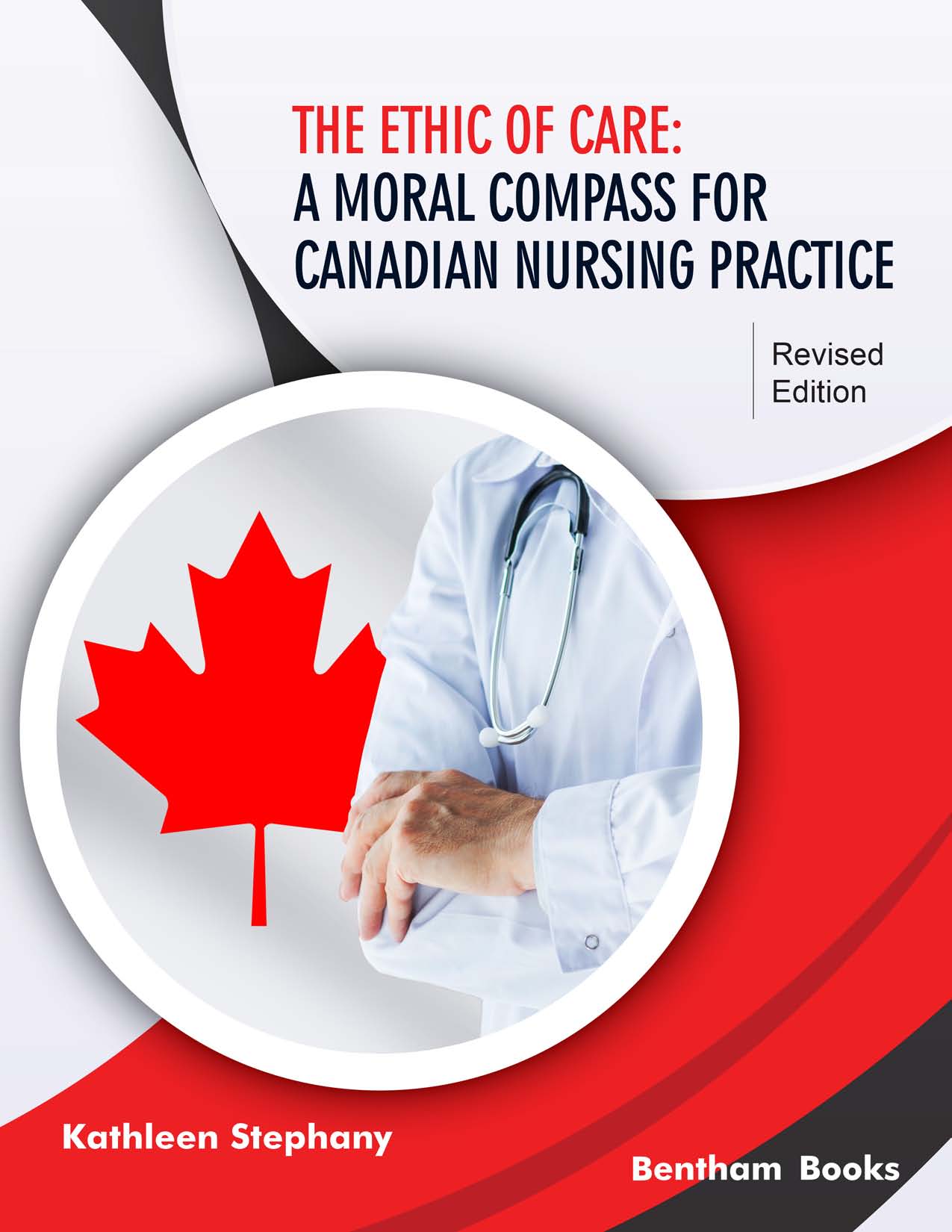Changes to the Revised Edition
The revised edition of The Ethic of Care: A Moral Compass for Canadian Nursing Practice differs from the original textbook in several ways. Many of the quotes and pictures are new and the book is reformatted to be more accessible and easily read on hand-held devices. Outdated information has been corrected, new information added, and some of the material contained in the previous book has been condensed. Learning activities, new narratives, recommended readings and web resources have also been added.
Overview of New Additions to the Chapters
Each Chapter in this revised book includes exciting new content. Chapter One forms the foundation for everything else that follows and has been expanded upon significantly. A section on biomedical ethical theories has been included. The origins of the ethic of care has been more fully developed. Watson’s (2008) caritas dimensions for healing are presented followed by dynamic strategies to practice unconditional positive regard. Chapter Two focusses on moral principles and care. The topic of moral courage is intensified which includes identifying its key attributes.
The legal portion of Chapter Three contains a summary of exceptions for the duty to maintain confidentiality. Part I of the newly revised version of the Canadian Nurses Association (CNA) Code of Ethics (2017) is presented with attention to additional content such as, the nurse’s role in end of life care and medical assistance in dying (MAID). Chapter Four emphasizes the importance of values clarification and includes strategies to facilitate empathetic listening and to enhance self-care.
Chapter Five introduces tools for moral decision making in nursing in the form of a model and framework. In the first edition of this textbook nurses were presented with one model for ethical decision making, The Mosaic Model for Ethical Decisions (Stephany, 2012). This revised edition includes that tool but in a very condensed and easy to use form. A Framework for Ethical Decision Making has been added as an additional resource (Oberle & Bouchal, 2009). This framework has been added because it is applicable in many venues and it is highly recommended by the CNA Code of Ethics (2017).
Chapter Six combines professionalism and accountability to inspire nurses to act responsibly. Redundant information has been removed and the bulk of the content is focused on the ethical responsibilities expected of nurses. Chapter Seven promotes advocacy as the heart of nursing. The focus includes ethical endeavours that protect public access to health care and actions that promote social justice. Chapter Eight explores how constantly changing technological advances can enhance healthcare delivery but create new moral situations for nurses that keep changing. Chapter Nine encourages nurses to whole-heartedly embrace diversity and to practice trauma-informed care to combat systemic racism and improve the health outcomes for Indigenous peoples 2 (Allan & Smylie, 2015; First Nations Health Authority (FNHA), 2016). A new Code of Conduct for inclusion is also proposed for nursing.
Chapter Ten deals with the somewhat sensitive subject matter of ethics, gender and sexual orientation. The goal is to encourage nurses to move beyond tolerance and to accept and respect life choices that differ from their own. The discussion highlights the fact that persons who identify as lesbian, gay, bisexual, transgender, queer or questioning their sexual identity, and 2 spirit (LGBTQ2S), are often victims of both acute and chronic trauma. Members of this population are also not very well understood or treated well by health professionals. Additional education and training are key to changing some of these factors.
Chapter Eleven covers the topic of spirituality in nursing and very little has been changed in this edition. Chapter Twelve is completely new and introduces the topic of ethical nursing leadership where nurses are inspired to take on the challenge of being agents for change.
NOTES
1Note: The details of all the Cases in Point, stories and narratives in this textbook have been altered sufficiently to ensure confidentiality.
2Note: In this textbook “Indigenous” is used as an inclusive and international term to describe individuals and collectives who consider themselves as being related to and/or having historical continuity with “First Peoples,” whose civilizations in what is now known as Canada, the United States, the Americas, the Pacific Islands, New Zealand, Australia, Asia, and Africa predate those of subsequent invading or colonizing populations (Allan & Smylie, 2015, p. 3).

